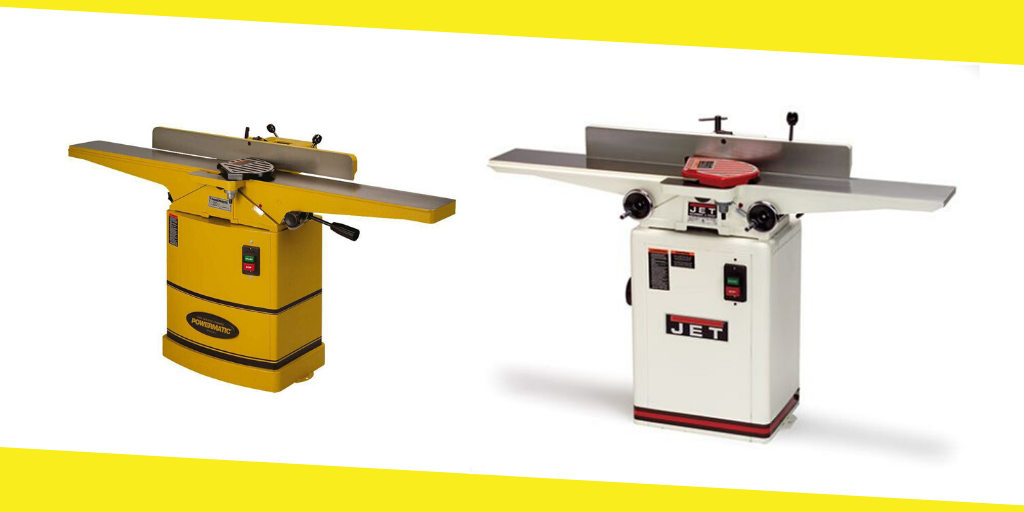How Does A Benchtop Jointer Work?

Carpentry is a beautiful craft, created centuries ago. Now with woodwork technology, the intricate art has become more manageable for experts, artists and hobbyists alike.
Contents
ToggleWhat is a Benchtop Jointer?
A benchtop jointer is a handy tool for many woodworkers. The machine has no legs or stands of its own. But instead, it rests on the surface of a work area or benchtop to use it. All jointer machines flatten the surface of wooden boards and square its edges.
There are two types of jointers. These are benchtop jointers and floor jointers. Benchtop jointers are smaller than floor jointers, which are heavy-duty and mainly used in commercialized woodshops.
It is suitable for joining wood pieces that are large, wide, or with various densities. The floor jointer requires a lot of floor space to operate in, while the benchtop jointer requires a clean and sturdy flat surface to function. The latter is more suited for home-based woodshops.
There is also the joint-planer, which is a combination of a jointer and a planer machine. Both machines are used to flatten the surface of wood, but differ in how it is done.
What is it used for?
Benchtop jointer machines are used by carpenters, woodwork artists, and lumberjacks. A jointer is an essential woodworking tool since it sets the foundation for quality woodwork.
Freshly cut wood has inconsistencies, which are referred to as warps or warping, in carpentry. Warped wood pieces are pushed through a benchtop jointer to achieve an even and consistent plane along the board’s length. Flat wooden pieces allow for more precise and consistent joinery in woodworking projects.
How does it work?
Inside of the jointer machine are infeed and outfeed rollers. These metal cylinder-shaped parts spin to keep the board moving in and out of the device. They keep the board pressed down to the table and feed the wood through the cutter head between them. The machine can joint only wood pieces that are narrower than the width of the blades. Benchtop jointers are most useful for those who only joint short pieces of wood. With a larger jointer, one can straighten longer or larger wood pieces.
Jointers generally have two flat surfaces with blades parallel to each other. The edges are on a cutter head that is powered by an electric motor that makes it rotate. It is set into the bed surface of the machine where the opposite surface of the board guides it. Parts of the board are shaved as it moves over the rotating cutter head. The result makes one side of the wood leveled and straight.
Parts of Benchtop jointer
Mentioned earlier are the cutter head, infeed and outfeed rollers. Other parts of a benchtop jointer include:
- a fence set at a 90-degree angle that can be adjusted on some models. It helps guide wood as it passes through the machine
- cutter head guard to protect users from the sharp blades and guard the cutter head
- the outfeed table is where the outfeed rollers are and where the wood rests as it comes out of the machine
- infeed table is where the infeed rollers and depth of cut adjusters are, and where the wood rests as it enters the machine
- on/off switch powers the device on or off
Jointing Tip
Maximize the use of your jointer by learning to joint well. Then you will know:
- which sides to joint (concave or bow sides),
- how to follow the wood’s natural grain to avoid damage,
- and how to remove small amounts of wood at each pass.
Safety Tips
- Read and understand manual instructions carefully
- Wear proper safety gear
- Use the guards provided with the machine
- Use push sticks or the like while jointing the wood
- Double-check adjustments to ensure that they are set, and everything is tightened down
- Avoid wearing loose clothing or anything which could be caught by the blades (such as gloves)
- Plan your movements ahead of time
- Avoid anything that is above your skill level or too risky
- Be aware of the type of wood and hardness the machine is most sited for
- Secure it to a wall if you can
- Keep out of reach of children
Recommended For You
Tips to Choose A Good Scissor Lift Course
Most Inside
Most Inside offers high-quality recommendations and valuable updates to enhance all aspects of your life, providing premium guidance and enriching experiences.




